Website of children’s author Paeony Lewis

Valerie Wilding
British author of story and information books for children of all ages. Of her twenty-two books to date, Val’s favourites include Bloody Tower and Discovering Dinosaurs.
“The main character in Bloody Tower got her name while I was in my editor's office. I'd suggested the story to her, and as I was talking, out came the name Tilly Middleton. I just knew it was right, and never had a second thought about it. The editor liked it so much she called her next baby Tilly!
I had to invent names for Celtic characters in Boudica and her Barmy Army. I wanted something short and ancient-sounding, and an archaeologist suggested I take place names and lop the ends off. For instance, 'Col' might come from 'Colchester'. It's a useful tip. One character was a Celtic slave and I called her Effra, which is the name of a river in London. I just liked it.”
Names sometimes come to authors in dreams. Here’s the story behind a name that came to Valerie Wilding in a bizarre dream...
“I once dreamed that I was driving past a local sweet shop with my best friend, and there was a notice outside saying that Tom Jones (the singer) was inside, baptising people in their baths. My friend and I got a bath out of the back of our car (!), took it inside and sat in it. When Tom Jones came up to me he asked, ‘What name?’ and I said my name was, ‘Parly Huggett’.
Next morning I remembered the dream, and thought Parly Huggett was a great name. I kept it for over three years before I used it. Parly Huggett ended up as a character in a very successful series of children’s stories broadcast on radio and TV. And it turned out he was a man, not a woman as I'd expected.”
Sometimes children inadvertently suggest names for characters. Here’s how Valerie’s Little Witches got their names.
“I used to teach small children. One day, a little girl was picking her nose, and her friend said, 'Eeuw! That's skusting!' I remembered that word.
A few weeks later, a boy showed me a drawing and asked, 'Is it beautiful?' I said it was better than beautiful - it was exquisite. He flounced back to his friends, saying, 'She says it's skwizit!' I remembered that word, too.
Then a couple of years later, I wrote a book about two little witches, one called Skusting, and the other called Skwizit. They certainly lived up to their names!”
~ To visit the website of Valerie Wilding go to Links
Copyright for all quotes is retained by the individual authors. Please do not use without their permission. Thanks.
David Bedford
British children’s author of heaps of picture books, including Ella’s Games and Big Bear, Little Bear. Here David talks about his football series, The Team, that begins with The Football Machine.
“My adult character in The Team football series is a mad inventor, so she definitely needed a quirky name. Her full title is Professor Gertie Gallop. I hope the name ‘Gertie’ is both endearing (readers should like her right away) and also a bit odd, especially for a Professor.
For the same reasons, I used the name ‘Gertie’ in my picture book Shaggy Dog and the Terrible Itch. Shaggy Dog meets Farmer Gertie, who right away agrees to help him. Maybe using the same name twice is lazy...?
The Team series also features a robot called Mark 1, and it didn't take me long to find his name. Inventors often name their prototype machines (the ones they make first for testing) 'Mark 1'. Because Mark 1 was the first robot invented by Professor Gertie, she just calls him Mark 1. It means he hasn't been fully tested... and I think his name sounds cute!
In Superteam, Professor Gertie tries to change Mark 1 into a new robot, who she calls Mark 2. This made me realise that giving characters a number as a name is really useful because if Professor Gertie invented 1000 robots, they could be called Mark 1, Mark 2, Mark 3... all the way up to Mark 1000!"
~ To visit David Bedford’s website go to Links
Here you’ll discover how children’s authors decided on names for their characters. Thank you so much to all the writers who’ve made wonderful contributions to this page.
Dotti Enderle
American author of children’s books including the popular Fortune Teller’s Club series.
“Before writing the Fortune Tellers Club series, I was taking a walk in the neighbourhood and I saw a street called Juniper Hill. I thought, "That'd make a great name for a book character." Later I created Juniper Lynch, inspired by the street Juniper Hill.
Another of the girls in the Fortune Teller’s Club is called Anne and that is the middle name of one of my daughters.
Then there is the third member of the Fortune Teller’s Club: Gena (spelled weird).
There are four ‘Genas’ in my family. My grandfather (Eugene) named his youngest daughter Gena. My mother, in honor of her sister, named my oldest sister Gena, who named her youngest daughter Gena. So how could I not name a character Gena?”
~ To visit Dotti Enderle’s website go to Links
Damian Harvey
British children’s author and poet whose new books include An Itch to Scratch and Snap!
“When I wrote the creepy story The Wailing Rock, I thought it would be nice to name the two main characters Sam and Molly. I picked Sam and Molly because they were the names of two characters in a film called ‘Ghost’ which my wife and I went to see on the night before our first daughter was born. Unfortunately, the publishers wanted me to change the names as another author had just written a story with a character called Sam. They also wanted me to try and use Welsh names.
All this got me thinking about lots of different names and their meanings. I didn't want to pick just any name - I wanted something that had a connection with my story. The story of The Wailing Rock is set in a small seaside village. There's talk of pirates and ghosts, and the sea plays a large part in the story (the two children get trapped in a cave as the tide comes in).
The Welsh names I chose were Dylan and Megan. Dylan means Sea God or Son of the Waves. Megan means Mighty, Strong, Able and Pearl.The meaning of the names doesn’t exactly fit the characters in the story but I was happy that the names had some connection with the sea.
There’s also a ghost pirate. I wanted him to sound really nasty and frightening so I called him Cut Throat Bones.”
~ To visit Damian Harvey’s website go to Links
Lynn Huggins-Cooper
Lynn, from the North East of Britain, adores bug hunting and beachcombing. This is reflected in her many educational, science and children’s fiction books.
“It can take me a long time to pin down a name. My latest picture book, Letters From Sidney, is about a boy who fought in World War One. Sidney is named after Sidney Dobson, my husband's great uncle. Large parts of 'my' Sidney are inspired by that young soldier.
I often use the names of children I love in my books. My own children have all appeared, as well as my nieces. However, I can't bear to use the names of people I love if something terrible is going to happen to a character - it fills me with ridiculous, superstitious dread. This is happening to me with a novel I’m writing about a sea witch - I'm worried that by mistake I shall hex someone I know who has the same name!”
~ To visit the website of Lynn Huggins-Cooper go to Links
Gill James
British author of children's and Young Adult fiction, and language learning material.
“Usually, when I give a character a name, that’s it. The name just seems to fit. To me, the Nick in Nick's Gallery looks like a Nick I know (although in other ways they are different). In the same story, Barney could only be called Barney – no other name fits. Then there is Sophie, the only possible name for the soft, gentle girl who wants so much to help Barney. Whilst the punk with a heart of gold just had to be Cynthia.
I'm currently writing a Young Adult novel set in the future. It’s partly fantasy and finding the names was fun. I have Kaleem, Louish, Frazier, Marijam, Gabrizan, Razjosh and a good old Pierre to link us to the old world. Even here, though, the characters came to me with the names intact.”
~ To visit the website of Gill James go to Links
Diana Kimpton
British children’s author, scriptwriter and creator of the Wordpool web sites on children’s books.
“In the Pony-Mad Princess series, the ponies all have names connected with light and the sky: Sundance, Rainbow, Moonbeam, Shadow, Starlight and Angel. It took ages to think of them. Now I can't imagine them ever being called anything else.
Whilst in The Bear Father Christmas Forgot, the child Madeleine, was named after my niece who had just been born.”
~ To visit the website of Diana Kimpton go to Links
Paeony Lewis
British children’s author and this is my website.
“In my picture book I'll Always Love You, Alex Bear is named after my son Tim, whose middle name is Alexander. My children inspired this story because they used to ask if I'd still love them when they did something bad. Of course I did.
In No More Biscuits, the characters Florence and Arnold began life with the names Becky and Squiffy Duck. Then they became Becky and Floppy Rabbit. Then Becky and Rabbity. Then Florence and Rabbity. And finally Florence and Arnold.
Why did I keep changing their names? It’s hard to pinpoint. As the stories developed over many months, the characters altered.
Cute, eager-to-please Becky became strong-willed, independent, imaginative Florence. The old Becky liked to drag Rabbity around by his ear. The new Florence was different. I felt that a character named Florence would understand that a stuffed rabbit hated having his ear pulled.
Then I changed my mind about the rabbit and imagined a monkey, with long arms and legs – perfect for dragging around (by the arm, not the ear!). Plus Florence had a clever, mischievous streak – just like monkeys. So Arnold the monkey was born. And because Arnold is totally real to Florence, he had to have a real name, not a stuffed toy name.
You might think all this is daft, but in my head my characters are real, not make believe. Just like Arnold is real to Florence.”
~ Paeony Lewis
Elizabeth Pulford
New Zealand author for children and adults. Liz has written over thirty children’s books including Call of Cruins and My Sister is Magic
“I love names. They are so important and I cannot begin a story until I have the right one. Be it for a place, a character or an animal. The names in my books have fallen into my head, but I have to be ready to catch them before they fall out again.
In my latest book, Can't Catch Me (Scholastic), the main character is called Alice Palace. I knew right from the beginning she was called Alice but wanted a second name. Then it came to me. Of course...Palace...to rhyme with Alice.
Another book, Cottle Street, has the name Larry T. I wanted a slightly threatening name but couldn't come up with a suitable last name so simply left it at Larry T, which suited him down to the ground. Children always want to know what the `T' stands for. But I'm not telling.
Then there is the mythical name of Cruins, in Call of the Cruins. I was sitting watching TV and `ping' into my head it arrived. I scribbled it down on a piece of paper. At that stage I had no idea of the story or what Cruin meant. But in the end it all worked out.”
~ To visit the new website of Liz Pulford go to Links
Glenys O'Connell
Journalist and children's author from Ireland.
“My characters arrive in my head complete with their names, and if I try to call them anything else, they rebel! As soon as I started to write The Pebble People Save The Day, Nicky Adams, sprang to mind. In fact, his name was the very first thing I wrote and was the beginning of the book. It's always been like that for me - I'm bullied by my characters.”
~ To visit the website of Glenys O’Connell go to Links
Ragnhild Scamell
Writer for young children whose picture books include Toby’s Doll’s House and The Wish Cat
“I have a real problem with names. Maybe it’s because although I live in Britain, I’m Danish by birth. Danish names often suggest themselves to me, and that makes life a little difficult, so I frequently end up using the names of children I know and love. Sometimes, rather than struggle with suitable names for my picture book characters, I tend to call them Bird or Sheep or Wolfie or Wish Cat. Pathetic, really, but it seems to work!”
~ To find out more about Ragnhild Scamell go to Links
Please note that copyright for all quotes is retained by the individual writer.
Website of Children’s Author, Paeony Lewis www.paeonylewis.com © Paeony Lewis 2005
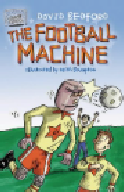

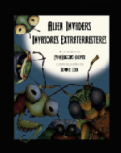

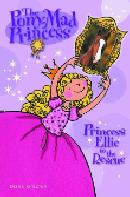
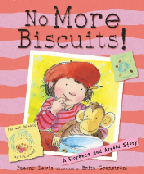
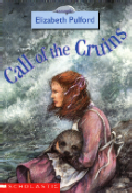
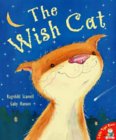
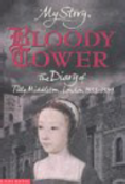


Jennie Walters
British children’s author, Jennie, has written seven books in the Animal Ark series (as Lucy Daniels) and is the author of the Party Girls series. Swallowcliffe Hall is her latest series about three generations of girls who’ve lived at the Hall.
“When I was twenty, I shared a flat in Notting Hill with a girl who had been christened Olive Edith Marjory, after three famous suffragettes. However, she preferred to be called Polly than any of those names (and I could see why!).
So when I was looking for a name for the housemaid heroine of House of Secrets, the first book in my Swallowcliffe Hall series, I decided she would be a Polly/Olive too. I made her Polly Perkins because that had a brisk sort of ring to it: as though she would be a cheerful, hard-working sort of person who got things done.
Polly’s daughter, from the second book in the series, Standing in the Shadows, is a headstrong, determined character – I called her Grace because it’s always been one of my favourite girls’ names and it’s short but lovely.
Polly’s grand-daughter in the third book, Shelter from the Storm, is Isobel because she’s dreamier and more languid, and it’s three syllables which makes for a different sort of name. I’m sure she’ll be Izzie for most of the time, though!”
~ To visit the website of Jennie Walters go to Links
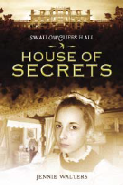
Jane Clarke
A British poet and children’s picture book author, Jane’s many books include Gilbert the Great.
“I love finding names for my animal characters, and the right name is so important to me that I don't start to write until I know it.
I begin with a thesaurus, listing words that fit the animal I want to write about, then I try morphing each word until I find one or more that makes a familiar-sounding name. For example, for a sloth, I wrote down lots of words for slow. One of the words was plod - that sounded like Rod, short for Rodney, so the sloth became Plodney. Gilbert is a shark and his name incorporates the fishy word gill. I like a name that sounds sturdy, friendly, slightly unusual and timeless - and it makes me very happy when I can find it.”
~ To visit the website of Jane Clarke go to Links
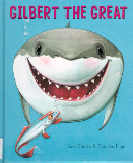
Moira Munro
Scottish illustrator, cartoonist and author/illustrator of children’s picture books, including the Hamish the bear.
“I recently had a rabbit and a guinea pig, and we called them ‘Rabbit’ and ‘Guinea Pig’. I did try and think up good names for them, but there you are. So when I was pregnant I dreaded the prospect of having to name my child. Giving birth seemed easy next to that. I cheered up when the beautiful name 'Chloe' came to me, and I thought the name was rare. Three days later we heard on the radio it was the most popular name of the year. That's how original I am!
Shortly afterwards, when I started writing my first picture book, I knew names were not my forte. I quickly named my main teddy bear ‘Foofy’, just to get on with writing. But he wasn't a ‘Foofy’ kind of bear, and the publishers came to the rescue with the name ‘Hamish’.
The moral of the story is, next time you need to name your pet, call your publisher. I foolishly ignored this wisdom when, in a surge of writing confidence, I was inspired to name the big bear in the story ‘Whizziguff’. Now that is original! The publishers kindly suggested we call him ‘Big Bear’.”
~ To visit the website of Moira Munro to to Links
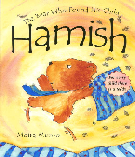
Fiona Dunbar
British children’s author. Her Lulu Baker trilogy is for 8-12 year olds: The Truth Cookie, Cupid Cakes, Chocolate Wishes.
“The ‘evil stepmother’ figure, Varaminta le Bone, first appears in The Truth Cookie. I knew I wanted her to have a name beginning with ‘V’, but I also knew that she was not a Vanessa, or a Veronica, or indeed any other ‘V’ name I could think of. So I decided to invent one, and when ‘Araminta’ popped into my head, I stuck a ‘V’ on the front of it, and hey presto! She’s ‘le Bone’ because she’s very skinny, permanently on a diet.”
~ To visit the website of Fiona Dunbar go to Links
Scroll down or click name to jump straight to the author
Elizabeth Arnold
British children’s author whose books include the Gypsy Girl Trilogy, which was adapted for television.
“In ancient Romany culture a gypsy child had three names.
A formal name; a pet or nickname; and a secret name whispered by a mother to her child only twice (once at the moment of birth and once more when the child is old enough to remember).
In The Parsley Parcel, the first book in The Gypsy Girl Trilogy, I chose Freya as my heroine’s formal name. Freya was named after the goddess Freya born on Friday. This was important because in The Parsley Parcel, special magic would be worked on Good Friday.
Freya’s pet name was Chime. Why? Because she was a Chime-Child, a gypsy girl born with special powers to work special enchantments.”
Her secret name? It’s a secret, of course, that she and I will share forever.
Freya’s best friend, and down to earth mentor, was a gorgio or non-gypsy. I called her Mary. Why? Mary is a simple name, one usually associated with a loving person with a simple honest and open personality. My Mary had these characteristics too.”
~ To read more about Elizabeth Arnold’s thoughts on naming characters, please click here.
~ To visit the website of Elizabeth Arnold go to Links
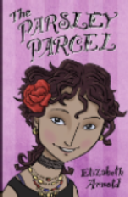
Sandra Glover
British children’s author whose writing spans early chapter books to gritty teen books.
“For My Spooky Sister I needed two girls' names that were quite similar so chose Alice and Alison, both of which could be shortened to Ally.
Sometimes a name needs to fit a title. For one of my books a mobile phone text message is important, so I wanted a short name beginning with M. The book became Message from Mia. Fortunately the name Mia suited the character!
When the main character in The Nowhere Boy, who can't speak, writes his name as J'hon, people think he's simply mis-spelt John but he hasn't. The strange name gives a clue to his identity.
Mainly though I simply choose names that sound right for the character and which I like!”
~ To visit Sandra Glover’s website go to Links
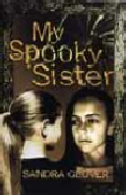
Mary Hoffman
Versatile British author who writes for all ages, from toddler to adult. She is particularly known for her Amazing Grace picture books and teenage Stravaganza mysteries.
“Names are vitally important to me. I even wrote a book in the 80s called Our Names, Our Selves (as Mary Lassiter) with a chapter on how writers do it. I had some amazing letters, including one from Barbara Cartland, who said all her heroines had to end in "a"!
I simply can't write a character till I know their name. And if I get the name wrong, the character won't come right till I change it.
Right from the the start I instinctively know the names of some characters. This happened with Grace of Amazing Grace and Lucien Mulholland in Stravaganza: City of Masks. But I had to think hard about a name for Lucien’s companion and guide in Talia. She is like Ariadne who led Theseus through the labyrinth in Greek mythology so I thought of the Italian version of that name and hence: Arianna.
In City of Stars, Georgia was Simone in the synopsis and for about the first seven chapters. It was all going very lumpily until I changed her to Georgia. And in the third book, City of Flowers, I had a main character called Sky and it was very inconvenient because there is no obvious Italian equivalent of his name. I tried all sorts of other names but they just didn't work because he WAS Sky and that was it.”
~ To visit the website of Mary Hoffman go to Links
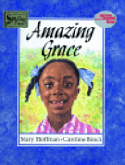
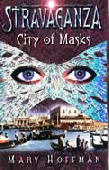
Michael Lawrence
British author well known for his popular Jiggy McCue series (The Killer Underpants, The Toilet of Doom and many more). Other books include The Aldous Lexicon series for teens (known as The Withern Rise Trilogy in the US).
“Names sometimes come quickly, sometimes after a lot of try-outs when the choices never feel quite right. You write about a character you’ve called Philip, say, just to give him a handle, but after several chapters you’re still a bit uneasy about it. Then the name Sebastian comes up, and you just know that this is the right one for him. After that, he’s ‘alive’. So it was with Naia and Alaric Underwood in The Aldous Lexicon. They both started out with different names, which went through several changes, until I arrived at these. Once I’d got them, I felt comfortable with the characters, as if I’d finally uncovered their true identities.
The names of characters in novels often seem to me either dull, too obvious, or as if the writer is trying too hard. Some readers will inevitably feel that the names Naia and Alaric are the result of me attempting to impress, but they are names of people I’ve known, albeit briefly: names that seemed a little out of the ordinary yet not too outlandish. As for the surname Underwood, you could say that it was borrowed from Leon Underwood, a painter and sculptor whose life and work interests me. But there’s something about the quality of the name that appeals too. An earthy sound, a ‘foresty’ sound, which suggests great age, darkness, intrigue.
And Aldous? Well, the author Aldous Huxley, of course.”
~ To visit the website of Michael Lawrence go to Links
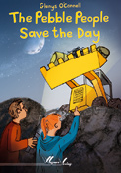
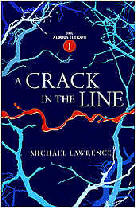
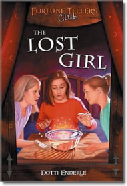
Mandy Stanley
British children’s author, illustrator, and designer (she even designs award-winning toys). Mandy is particularly known in the UK and US for her picture book series about a rabbit called Lettice.
“I chose the name Lettice because I had enjoyed watching a TV adaptation of the book The Flame Trees of Thika by Elspeth Huxley in which one of the central characters was named Lettice which I think is a really pretty name. Also, of course, I like the play on words and that it would sound like 'lettuce' which I thought was very suitable for a rabbit. However, since owning four real rabbits (Roxy, Wellington, Ruby and Moss), I have discovered that lettuce is not a particularly good thing for a rabbit to eat. Anyway, that’s how Lettice got her name.”
~ To visit the website of Mandy Stanley go to Links